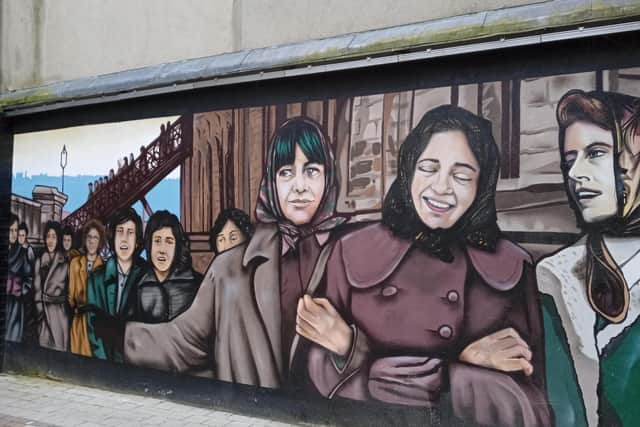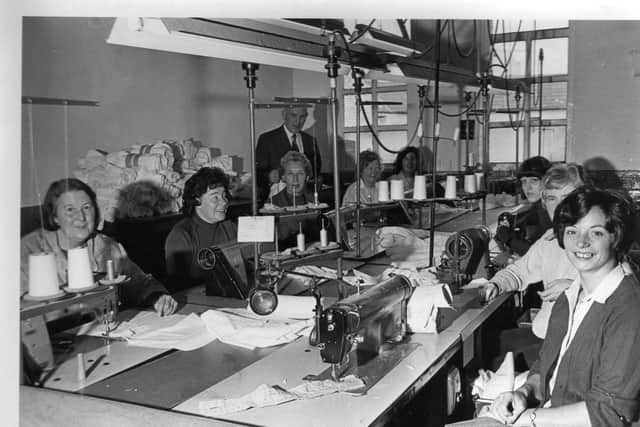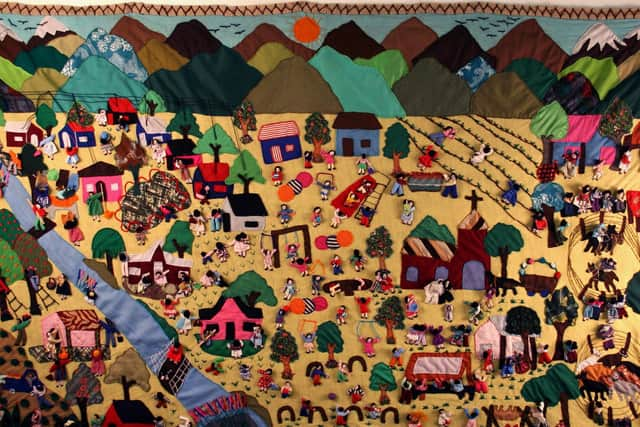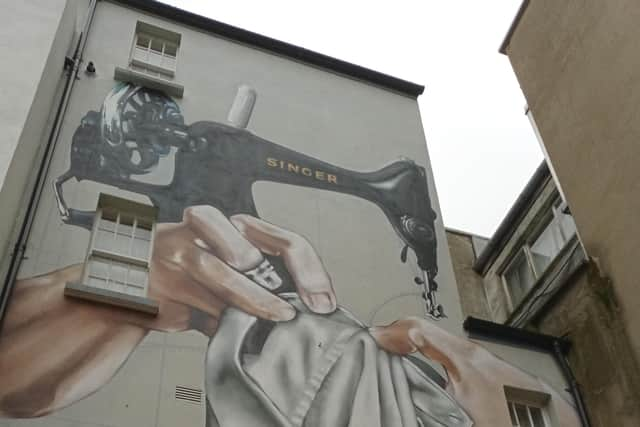From shirts to arpilleras: Derry’s textile heritage continues...
and live on Freeview channel 276
Indeed he wasn’t the only one who’s most poignant memories of Derry include this acoustic morning call to the woman of the city.
The Old Ebrington Factory Horn echoed across the city once again last year during Covid to accompany the weekly ‘Clap for the NHS/Frontline workers’, which then Mayor Cllr Michaela Boyle said was a poignant and heartfelt gesture that would resonate with the people of the city and district. It epitomised the importance of the textile industry to the history of Derry.
Advertisement
Hide AdAdvertisement
Hide AdA new FREE exhibition entitled ‘Shirts, Singing and Sewing’ is currently being displayed at the Tower Museum to give place to this under-documented story and to highlight the ongoing significance of textiles to contemporary life in Derry.


The Fashion and Textile design Centre (FTDC) will subsequently host the exhibition at their premises on Shipquay Street with a launch at the beginning of September 2021. Alongside the exhibition, Deirdre Williams (Business Development Manager at FTDC) says they “expect a diverse range of workshops that will appeal to all generations”.
The exhibition documents the origins, the rise and the fall of Derry as a world-wide hub for quality textiles.
Over a number of years, the Tower Museum has been entrusted with many special items relating to this heritage. So much in fact, that only a fraction of it is on display with hopes for more exhibition opportunities in the future.
Advertisement
Hide AdAdvertisement
Hide AdThe current exhibition gives a time capsule snapshot into the life of a factory girl including, the sewing and collar/button-hole cutting machines, photographs from inside the factories during working hours alongside business ledgers, minute books, promotional materials, and photographs of staff social outings from Portrush to Donegal.


As well as celebrating the history of shirt creation in Derry, the exhibition also importantly illustrates how the textile legacy in the city lives on in various forms, notably in the Fashion and Textile Design Centre.
Deirdre Williams, Business Development Manager at the centre explains that it “was established in 2014 by the Inner City Trust as a legacy to our city’s once great shirt manufacturing industry. It was set up to help shape and support fashion and textiles within the city and help people develop the skills required to seek employment or start up their own businesses.”
The FTDC also runs community classes in pattern cutting and sewing, works with schools and youth organisations like Princes Trust and delivers business mentoring to start-up businesses.
Advertisement
Hide AdAdvertisement
Hide AdThe other contemporary textile programme closely linked to the city comes in the form of the International Conflict Textiles collection curated by Roberta Bacic. It is this that brought me to the exhibition. In 2006/7, Roberta Bacic was asked to facilitate discussions with women in Northern Ireland from different backgrounds about dealing with the history of the Troubles. To open up discussion, she used a Peruvian arpillera made by women from both sides of the conflict in Peru in the 1980s/1990s. Arpilleras are three-dimensional textiles from Latin America, of Chilean origin which became a medium, primarily for women to denounce the human rights abuses and repression of the Pinochet dictatorship in Chile, 1973-1990. They became a source of income for women whose husbands were disappeared or imprisoned and a means to depict images of the political oppression to those abroad. During her work in NI, Roberta was asked to explore how quilt-makers in Northern Ireland had/would depict the conflict in their work, and non-surprisingly, given NI’s strong textile history which began in homes and moved to large scale manufacturing, the results were astounding.


Since then, Conflict Textiles has continued to use the process of arpillera workshops, seeding the creation of arpilleras and textiles exhibitions as a means of encouraging people to reflect on and process the difficult past in Northern Ireland and beyond.
One of the Chilean arpilleras is displayed in the Tower Museum’s exhibition and is entitled ‘Life in Our Poor Neighbourhood’. Recently, I asked my cross-community group of women, many of whom are former ‘factory girls’ to comment on the piece. The dialogue which unfolded shows the power of such pieces in processing the past, fostering empathy and evoking emotions that need to be worked through. One of the ladies kicked off the conversation- “You see that part that the children are on. What’s that? Is that rows of plants?... You know when I saw it at the start, I thought, God forgive me, I thought it was barbed wire”. Her observation was quickly followed by a chorus of “So did I”. Another continued- “We saw enough of that in our lifetime”. When I asked what she meant, she said, “Whenever the army was in the town, there was barbed wire everywhere, barbed wire barricades… it was just a barbed wire country”.
This evoked a conversation about the songs the ladies held in their record collections: The Wolfe Tones, ‘Men behind the Wire’, the Dublin City Ramblers’ ‘Over the Wall’ and U2’s ‘Sunday Bloody Sunday’. As if taken back to the era, a couple of the women started singing the lyrics to these songs. Clearly the observation triggered memories of conflict architecture from Derry during the Troubles.
Advertisement
Hide AdAdvertisement
Hide AdBased on my own powerful experience of witnessing the power of textiles to Derry in both the past and the present, I encourage locals to attend the exhibition at the Tower museum and FTDC to support this ongoing relationship of the city with textiles. Textiles made the city great once before and through programmes like Conflict Textiles, it could clearly do it again by helping us move on from conflict.


*Kyra Reynolds is a community worker currently delivering an International Fund for Ireland Peace Barriers Programme with the Bogside and Brandywell Initiative. She is also currently a writer in residence for Conflict Textiles.